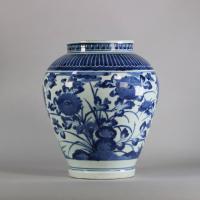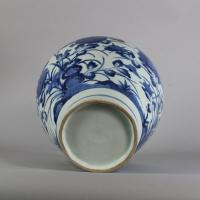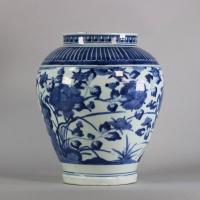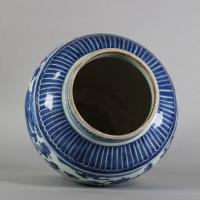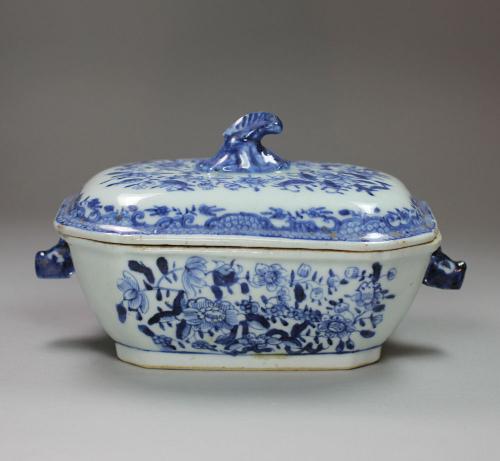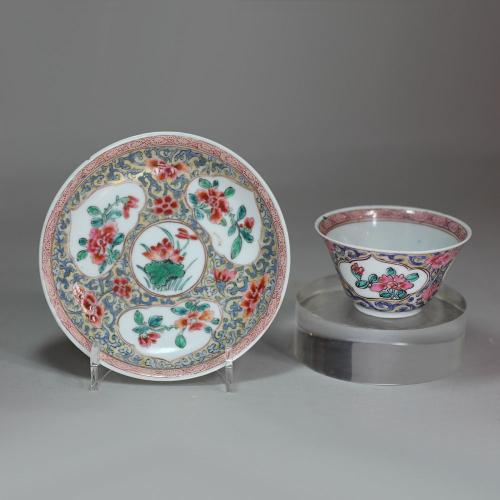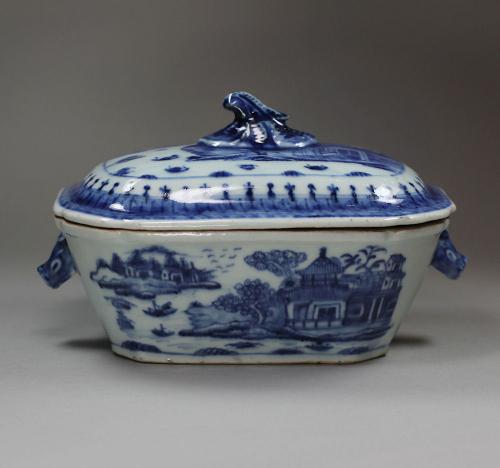
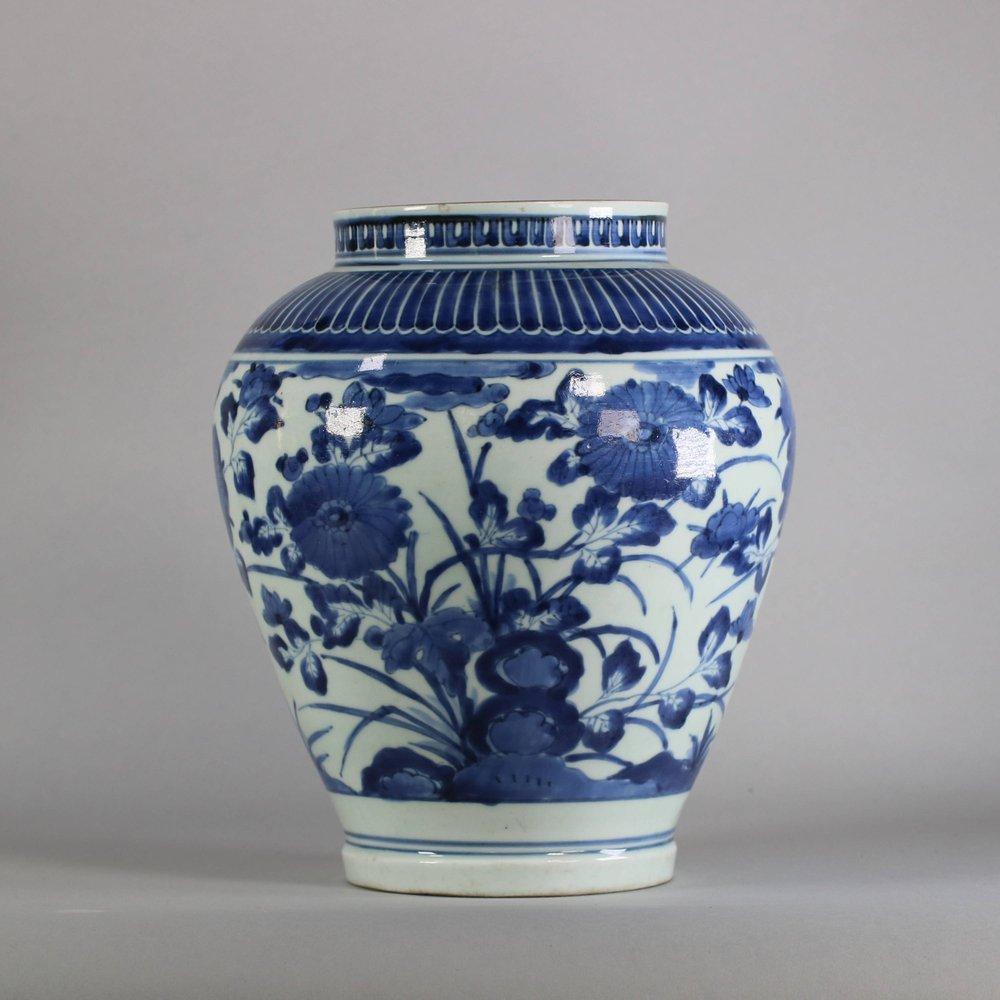
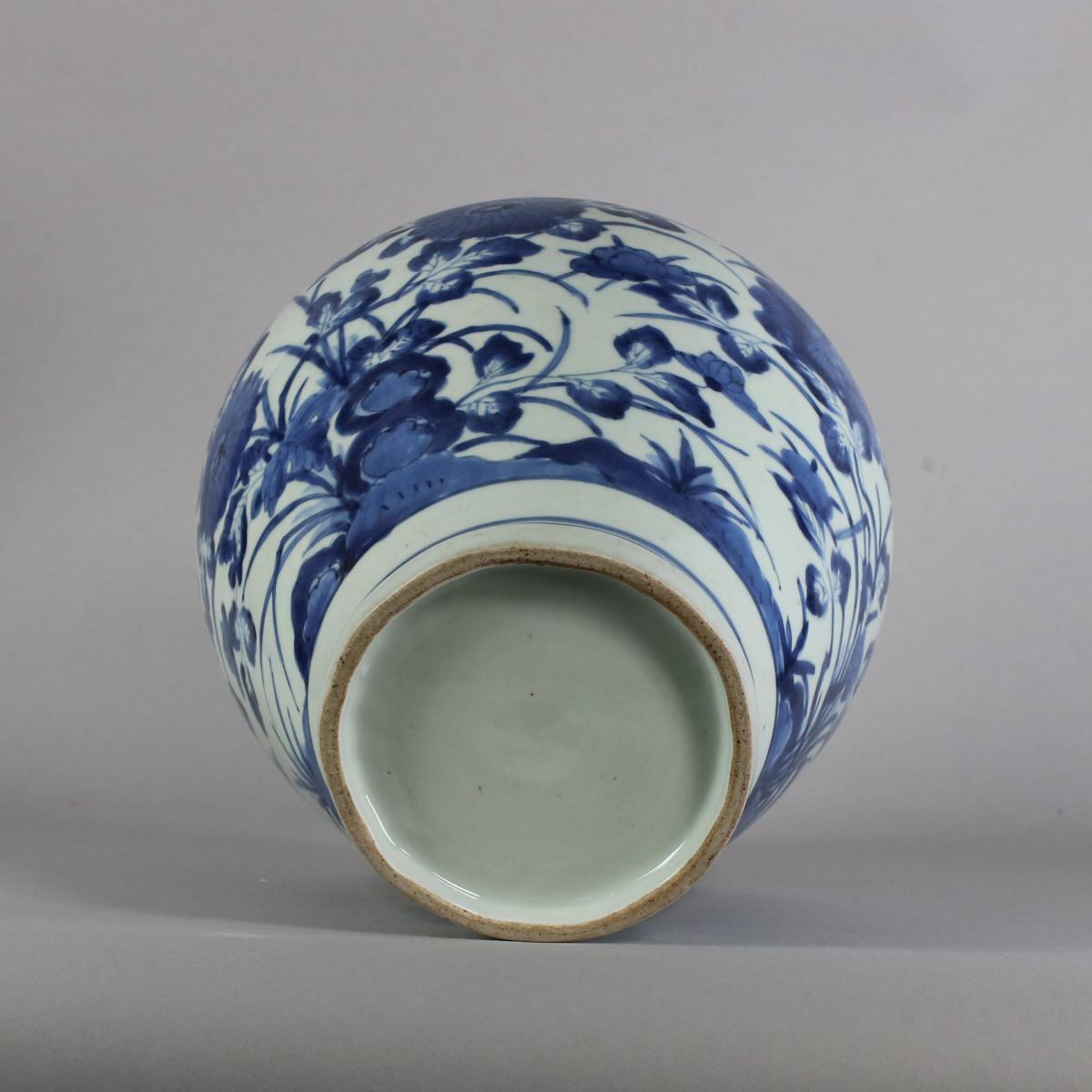
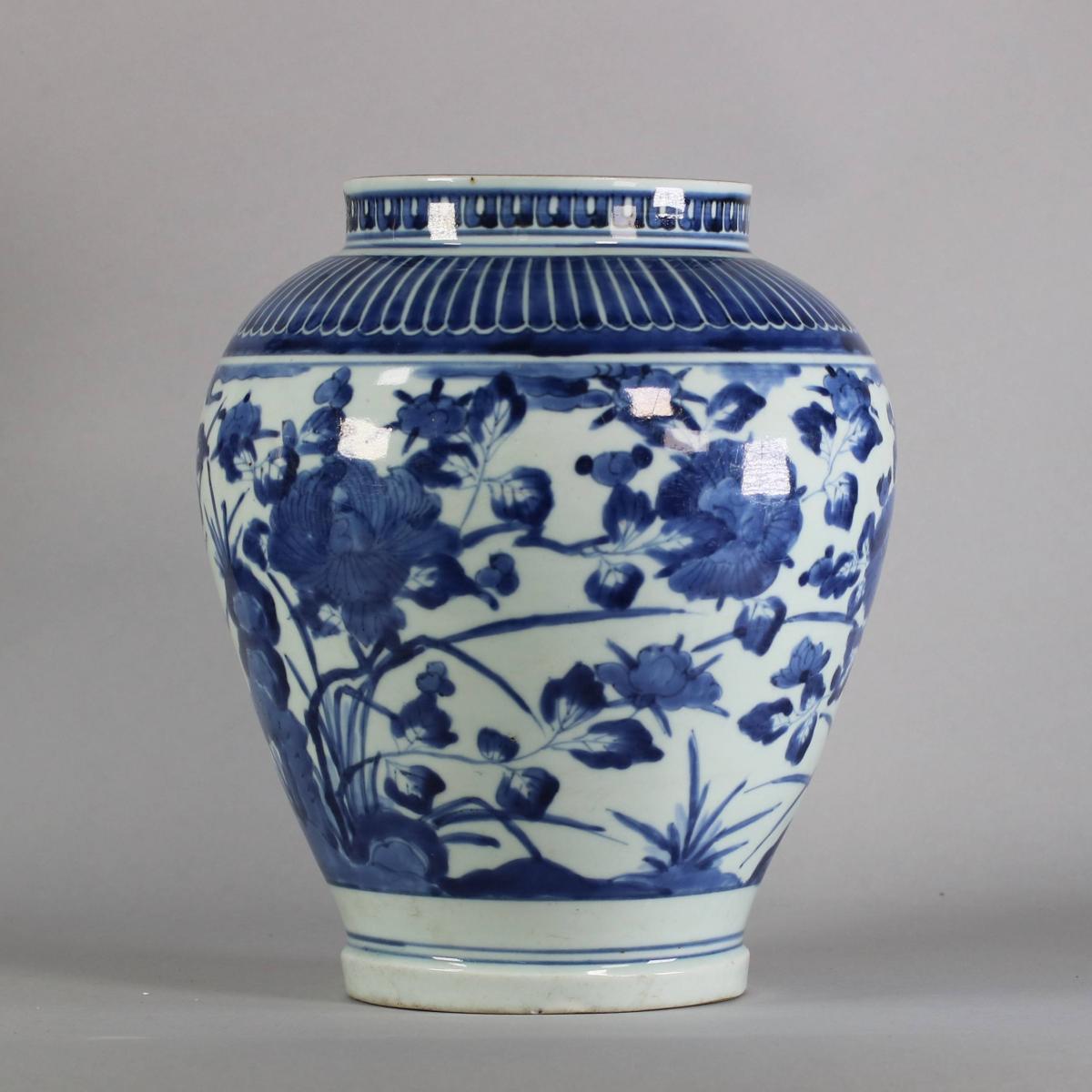
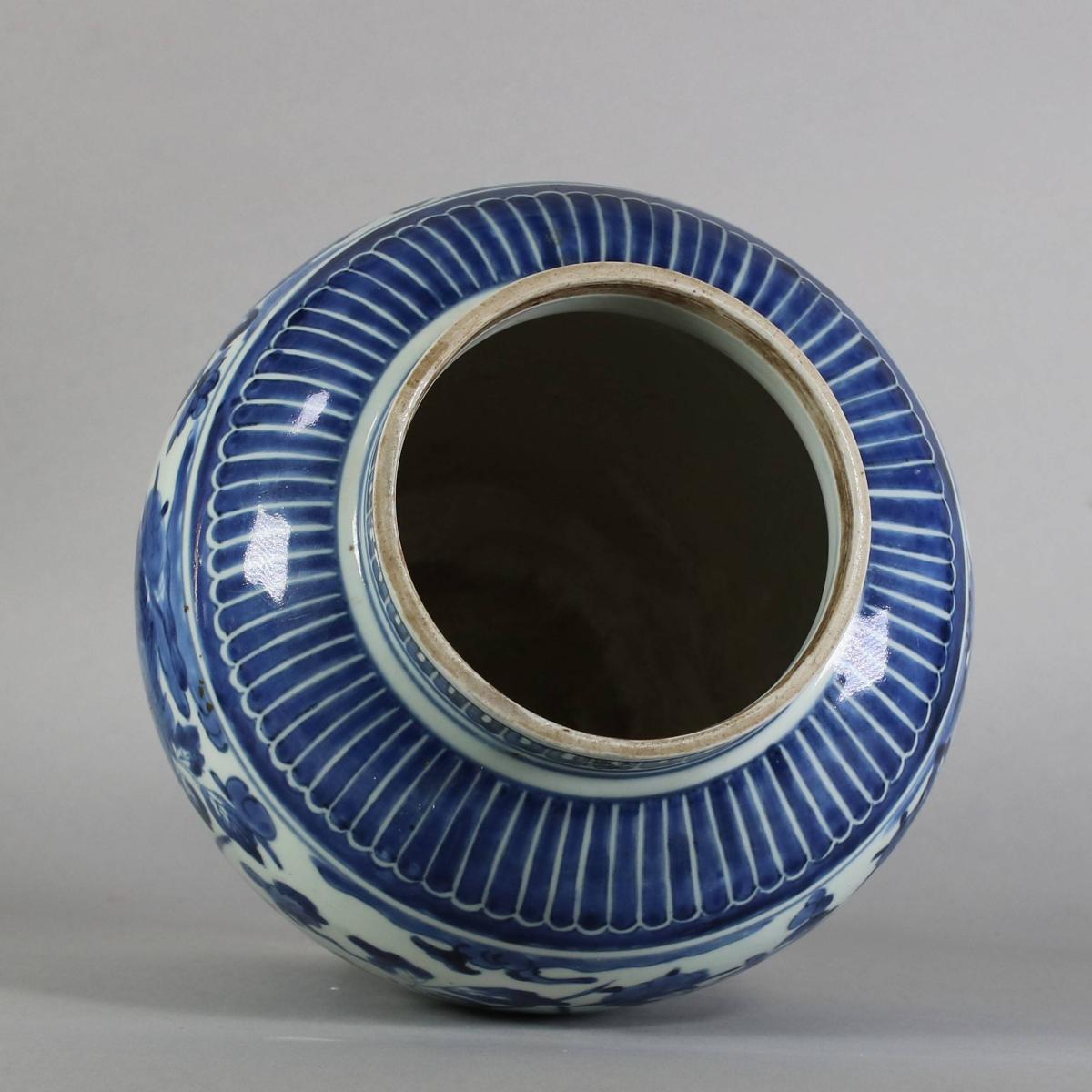
Price on application
This object is eligible for a Certificate of BADA Provenance
The BADA Standard
- Since 1918, BADA has been the leading association for the antiques and fine art trade
- Members are elected for their knowledge, integrity and quality of stock
- Our clients are protected by BADA’s code of conduct
- Our dealers’ membership is reviewed and renewed annually
- Bada.org is a non-profit site: clients deal directly with members and they pay no hidden fees
Japanese blue and white Arita vase, circa 1680, stoutly potted with wide shoulders and a tapering foot, decorated in underglaze cobalt blue with a continuous pattern of chrysanthemum, peony, foliage and sprouting grasses emerging from rockwork below a cloudy sky, the shoulders with a band of radiating petals and the short neck encircled by a band of small lappets, the foot with double circle in underglaze blue.
Height: 27 cm. (10 5/8in.)
Condition: Small chip to rim
Notes:
Tree peony, 牡丹 ‘botan’ [J] or ‘mudan’ [C], is not native to Japan and was introduced by monks in the 8th century from China, where the flower was also known as ‘huawang’, (‘King of Flowers’) and had been used in traditional medicine for millennia. From the Tang dynasty onwards, peony had been associated with royalty and high status owing to Empress Wu’s appreciation for the flower, and consequently was cultivated in imperial gardens. In Japan peonies were planted in temple and court gardens as ornamental plants, with Kyoto in particular becoming a centre for their production. During the 17th and 18th centuries, developments in propagation technique resulted in their widespread cultivation at sites across Japan. Their association with honour and good fortune contributed to the popularity of peony as a motif within the art and ceramic design of the Edo Period.
Dimensions
Height: 27 cm. (10 5/8in.),Condition report
Small chip to rimStock number
W397The BADA Standard
- Since 1918, BADA has been the leading association for the antiques and fine art trade
- Members are elected for their knowledge, integrity and quality of stock
- Our clients are protected by BADA’s code of conduct
- Our dealers’ membership is reviewed and renewed annually
- Bada.org is a non-profit site: clients deal directly with members and they pay no hidden fees


